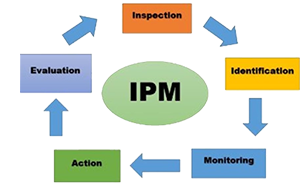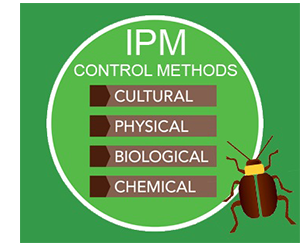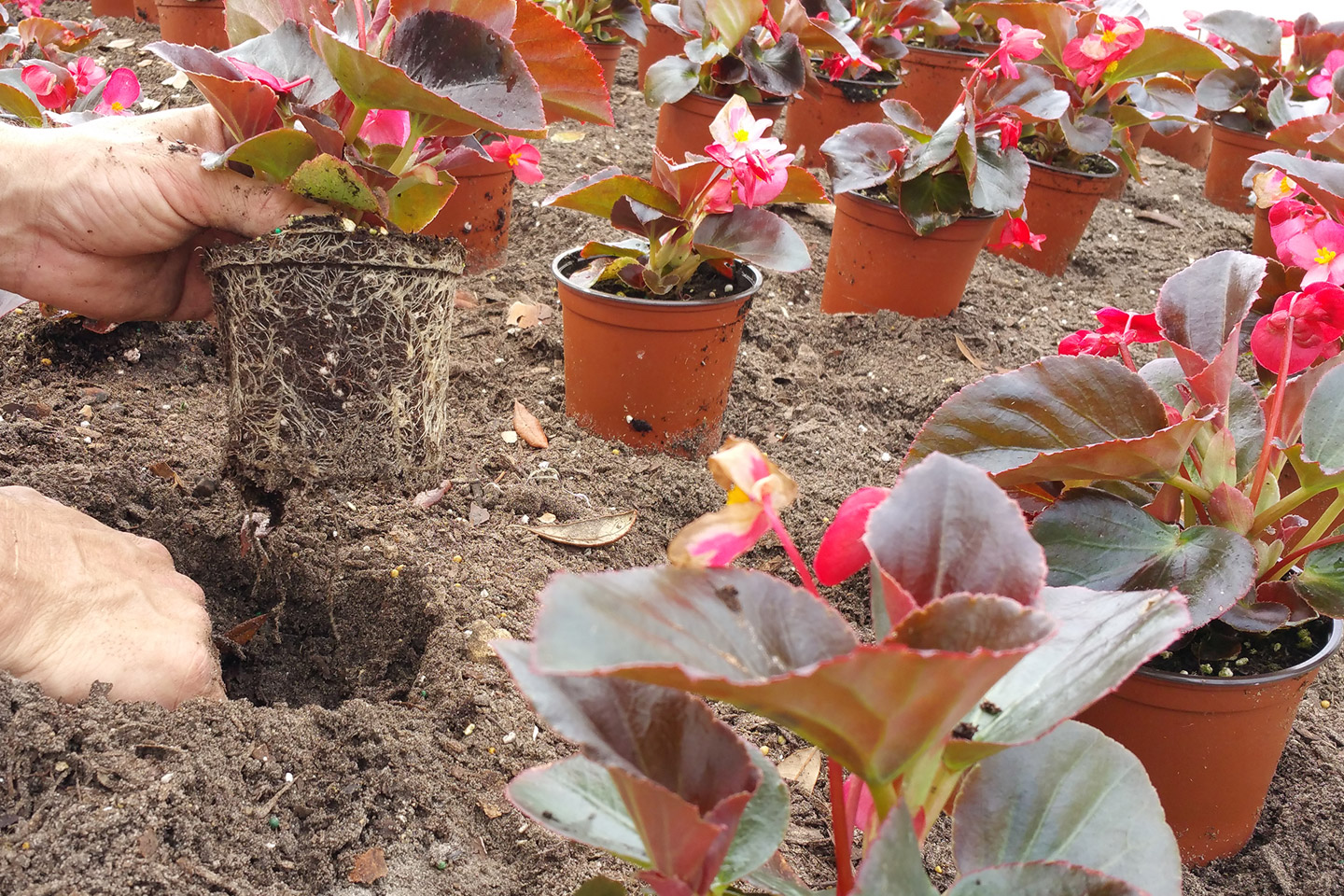Integrated Pest Management - Sit Down with CEPRA
 The pressure to maintain the "perfect" landscape has forced companies to over-maintain their landscapes. Issues such as overwatering and fertilization, the wrong plant in the wrong place, and improper maintenance practices, contribute to the promotion of insect and disease issues in the landscape. Given the need to provide instant gratification for their clients, landscape companies tend to quickly turn to pesticides as an immediate and primary solution to pest management. For years, blanket pesticide applications were the norm. However, this one-dimensional approach has led to environmental contamination, pest resistance and the destruction of beneficial insects. To retain the good while forgoing the bad, a new system needed to take place. Thus, the practice regarded as Integrated Pest Management was born.
The pressure to maintain the "perfect" landscape has forced companies to over-maintain their landscapes. Issues such as overwatering and fertilization, the wrong plant in the wrong place, and improper maintenance practices, contribute to the promotion of insect and disease issues in the landscape. Given the need to provide instant gratification for their clients, landscape companies tend to quickly turn to pesticides as an immediate and primary solution to pest management. For years, blanket pesticide applications were the norm. However, this one-dimensional approach has led to environmental contamination, pest resistance and the destruction of beneficial insects. To retain the good while forgoing the bad, a new system needed to take place. Thus, the practice regarded as Integrated Pest Management was born.
Integrated Pest Management (otherwise known as IPM) is an approach to managing pests that combines scientific principles and common sense. Some landscape managers avoid IPM because it requires time and effort upfront, whereas spraying pesticides is seemingly fast and easy. IPM, however, is "whole health" for your landscape. By using the IPM techniques, you can be in tune with your landscape as a whole and provide a proactive approach to pest concerns instead of a reactive response. When IPM practices are utilized, the positive results are plentiful. Benefits include healthier plants, increasing the survival rate of beneficial insects, long term pest control, prevention of future problems and the reduced use of pesticides.
IPM begins with planning and selecting the correct trees, palms, turf grass and ornamentals for the landscape. Landscape maintenance companies are challenged by maintain the existing landscape on a property as best as possible. Often there are plants in this mature landscape that are not suited to the site's growing conditions and will always be under some degree of physiological stress. Stressed plants and trees are much more prone/susceptible to pest and disease issues.
The goal of an IPM program is to keep pest populations below the level at which a pesticide becomes necessary. It is also important to understand that IPM considers that a certain amount of pest damage will be tolerated. There are millions of insect species in our world, with more than 100,000 species found in the United States alone. However, less than one percent of these insects are damaging to ornamentals, turf grass, trees, and palms. Our landscapes always contain pests, but they typically remain below damaging levels. The sighting of a single pest does not warrant action in our landscapes.
It will be up to you and your client to determine the threshold of damage that will be acceptable in the landscape. The emphasis of IPM is on managing pests (i.e., keeping them within tolerable limits) rather than completely eliminating the pests.
 IPM's focus is on the long-term prevention of pests or their damage by managing the landscape. There are 5 steps to Integrated Pest Control:
IPM's focus is on the long-term prevention of pests or their damage by managing the landscape. There are 5 steps to Integrated Pest Control:
- Inspection
- Consistently inspecting for pests and their natural enemies.
- Pest Identification
- Identifying the pest and their natural enemies.
- Understanding the pest's life cycle and behavior.
- Monitoring
- Setting a damage threshold.
- Is the current level of damage to the landscape within the predetermined limit?
- Action
- Apply IPM control methods.
- Evaluation
- Did your IPM strategies work?
 Once the decision has been made to control a pest, the landscape professionals and community leaders must decide which management tool to use. Landscape IPM involves the use of multiple of the following strategies:
Once the decision has been made to control a pest, the landscape professionals and community leaders must decide which management tool to use. Landscape IPM involves the use of multiple of the following strategies:
Cultural
The goal of a cultural control is to alter the environment or condition of the host plant to prevent or suppress pests. These practices will reduce pest establishment, reproduction, dispersal, and survival. When the opportunity arises, it is important to choose the right plants for the right place and that they are suitable for the growing conditions of the landscape. Additionally, make sure that you understand the nutritional requirements and proper maintenance techniques that are required to make the plants sustainable in the landscape.
| PROS | CONS |
|---|---|
| By reducing the plant material pests prefer, you decrease the number of pests that inhabit your landscape | Limits plant palette, aka the selection of plants to install in your landscape |
Physical/Mechanical
Mechanical practices are the first to consider when pests have reached an unacceptable level. This control is the management of pests by physically removing them from the plants. This practice kills the pest directly or makes the environment unsuitable for the pest. Methods include hand removal, pruning, mulching and the removal of infested or disease plants.
| PROS | CONS |
|---|---|
| Immediately removes the pests from your landscape | Labor intensive |
Biological
Biological practices include using one organism to control another. Many natural enemies are present in the landscape and control a wide range of pests. You can also purchase and add beneficial organisms to the environment such as predators, parasites of pests in a targeted way to suppress pest populations.
| PROS | CONS |
|---|---|
| This method can greatly reduce the need to spend time and pesticides on a landscape | The beneficial organisms have free reign to leave the landscape before combating the pest population |
Chemical
Pesticides should be used only when needed and in combination with other IPM approaches for more effective, long term control. The chemicals should be selected and applied in a way that selectively targets the specific pest and limits the exposure to humans, non-target organisms and the environment.
| PROS | CONS |
|---|---|
| Long-lasting effect: pests are not likely to return for some time | Biological resistance can build up, which requires new products to be used to manage pest populations |
Conclusion
The management of landscape pests is a dynamic challenge that requires constant adaptation to the issues that evolve. IPM plays a vital role in our Florida landscapes and helps to safeguard our environment, beneficial insects, and pollinators health. Talk to your local landscape professionals to see which ways you can utilize an IPM system to benefit your communities.
